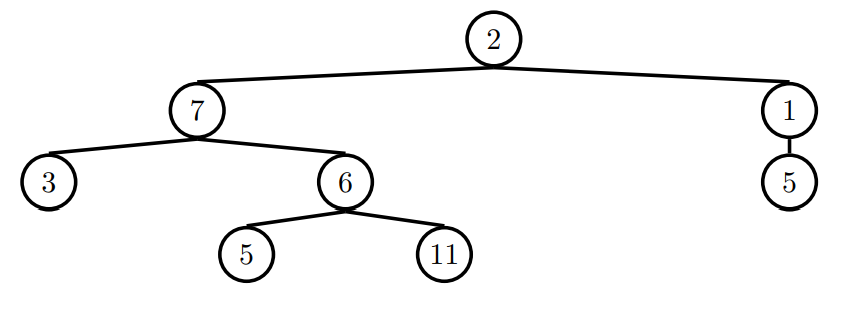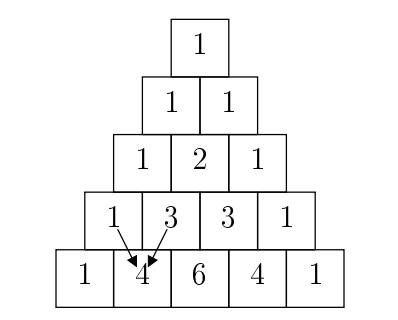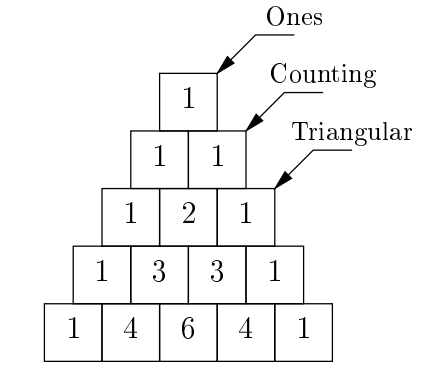Discussion 8: Linked Lists, Mutable Trees, String Representation
Representation - Repr and Str
There are two main ways to produce the "string" of an object in Python:
str() and repr(). While the two are similar, they are
used for different purposes. str() is used to describe
the object to the end user in a "Human-readable" form, while repr() can be thought of as
a "Computer-readable" form mainly used for debugging and development.
When we define a class in Python, str() and repr() are
both built-in methods for the class. We can call an object's str() and
repr() by using their respective methods. These methods can be invoked by calling repr(obj) or str(obj) rather than the dot notation format obj.__repr__() or obj.__str__(). In addition, the print() function calls the str() method of the object,
while simply calling the object in interactive mode calls the repr()
method.
Here's an example:
class Rational:
def __init__(self, numerator, denominator):
self.numerator = numerator
self.denominator = denominator
def __str__(self):
return f'{self.numerator}/{self.denominator}'
def __repr__(self):
return f'Rational({self.numerator},{self.denominator})'
>>> a = Rational(1, 2)
>>> str(a)
'1/2'
>>> repr(a)
'Rational(1,2)'
>>> print(a)
1/2
>>> a
Rational(1,2)Questions
Q1: Repr-esentation WWPD
What would Python display?class A:
def __init__(self, x):
self.x = x
def __repr__(self):
return self.x
def __str__(self):
return self.x * 2
class B:
def __init__(self):
print('boo!')
self.a = []
def add_a(self, a):
self.a.append(a)
def __repr__(self):
print(len(self.a))
ret = ''
for a in self.a:
ret += str(a)
return ret>>> A('one')>>> print(A('one'))>>> repr(A('two'))>>> b = B()>>> b.add_a(A('a'))
>>> b.add_a(A('b'))
>>> bLinked Lists
There are many different implementations of sequences in Python. Today, we'll explore the linked list implementation.
A linked list is either an empty linked list, or a Link object containing a
first value and the rest of the linked list.
To check if a linked list is an empty linked list, compare it against the class
attribute Link.empty:
if link is Link.empty:
print('This linked list is empty!')
else:
print('This linked list is not empty!')Check out the implementation of the Link class below:
class Link:
empty = ()
def __init__(self, first, rest=empty):
assert rest is Link.empty or isinstance(rest, Link)
self.first = first
self.rest = rest
def __repr__(self):
if self.rest:
rest_str = ', ' + repr(self.rest)
else:
rest_str = ''
return 'Link({0}{1})'.format(repr(self.first), rest_str)
def __str__(self):
string = '<'
while self.rest is not Link.empty:
string += str(self.first) + ' '
self = self.rest
return string + str(self.first) + '>'Questions
Q2: The Hy-rules of Linked Lists
In this question, we are given the following Linked List:
ganondorf = Link('zelda', Link('young link', Link('sheik', Link.empty)))What expression would give us the value 'sheik' from this Linked List?
What is the value of ganondorf.rest.first?
Q3: Sum Nums
Write a function that takes in a linked list and returns the sum of all
its elements. You may assume all elements in s are integers. Try to implement this recursively!
Q4: Multiply Lnks
Write a function that takes in a Python list of linked lists and multiplies them element-wise. It should return a new linked list.
If not all of the Link objects are of equal length, return a
linked list whose length is that of the shortest linked list given. You
may assume the Link objects are shallow linked lists, and that
lst_of_lnks contains at least one linked list.
Q5: Flip Two
Write a recursive functionflip_two that takes as input a
linked list s and mutates s so that every pair
is flipped.
Run in 61A Code
Trees
Recall the tree abstract data type: a tree is defined as having a label and some branches. Previously, we implemented the tree abstraction using Python lists. Let's look at another implementation using objects instead:
class Tree:
def __init__(self, label, branches=[]):
for b in branches:
assert isinstance(b, Tree)
self.label = label
self.branches = branches
def is_leaf(self):
return not self.branchesWith this implementation, we can mutate a tree using attribute assignment, which wasn't possible in the previous implementation using lists. That's why we sometimes call these objects "mutable trees."
>>> t = Tree(3, [Tree(4), Tree(5)])
>>> t.label = 5
>>> t.label
5Questions
Q6: Make Even
Define a functionmake_even which takes in a tree
t whose values are integers, and mutates the tree such that all the
odd integers are increased by 1 and all the even integers remain the same.
Run in 61A Code
Q7: Leaves
Write a function leaves that returns a list of all the label values of the
leaf nodes of a Tree.
Q8: Find Paths
**Hint**: This question is similar to find_paths on Discussion 05.
Define the procedure find_paths that, given a Tree t and an entry, returns a list of lists containing the nodes along each path from the root of t to entry. You may return the paths in any order.
For instance, for the following tree tree_ex, find_paths should behave as specified in the function doctests.

Exam prep
Q9: Node Printer
Difficulty: ⭐⭐_
Your friend wants to print out all of the values in some trees. Based on your experience in CS 61A, you decide to come up with an unnecessarily complicated solution. You will provide them with a function that takes in a tree and returns a node-printing function. When you call a node-printing function, it prints out the label of one node in the tree. Each time you call the function it will print the label of a different node. You may assume that your friend is polite and will not call your function after printing out all of the tree's node labels. You may print the labels in any order, so long as you print the label of each node exactly once.
(Very) optional challenge: See if you can come up with a solution that prints out all of the nodes from one layer before moving on to the next (hint: it still fits within the skeleton code).
Important: The skeleton code is only a suggestion; feel free to add or remove lines as you see fit. Also, it's okay if your code doesn't pass the doctest; if you run the test case with the green arrow and all 8 values are printed exactly once, then your implementation is fine.
Run in 61A CodeQ10: Iterator Tree Link Tree Iterator
Difficulty: ⭐⭐
Part A: Fill out the function funcs, which is a generator that takes in a linked list link and yields functions.
The linked list link defines a path from the root of the tree to one of its nodes, with each element of link specifying which branch to take by index. Applying all functions sequentially to a Tree instance will evaluate to the label of the node at the end of the specified path.
For example, using the Tree t defined in the code, funcs(Link(2)) yields 2 functions. The first gets the third branch from t -- the branch at index 2 -- and the second function gets the label of this branch.
>>> func_generator = funcs(Link(2)) # get label of third branch
>>> f1 = next(func_generator)
>>> f2 = next(func_generator)
>>> f2(f1(t))
4Part B: Using funcs from above, fill out the definition for apply, which applies g to the element in t who's position is at the end of the path defined by link.
Q11: O!-Pascal - Fall 2017 Final Q4
Difficulty: ⭐⭐
Pasal's Triangle is perhaps familiar to you from the diagram below, which shows the first five rows.

Every square is the sum of the two squares above it (as illustrated by the arrows showing here the value 4 comes from), unless it doesn't have two squares above it, in whih case its value is 1.
(a) Given a linked list that represents a row in Pasal's triangle, return a linked list that will represent the row below it. Your solution must not use L.getitem(k) (or L[k]). You may not need all the lines.
(b) Fill in the procedure called makepascaltriangle to create a full Pacsal Triangle of height k. Represent the entire triangle as a linked list of the rows of the triangles, whih are also linked lists. Again, your solution must not use L.getitem(k) method (or L[k]).
(c) Pascal's Triangle contains many patterns within it. For instance, consider the diagonals. The first diagonal (going down the left side) is just a series of 1s. The seond diagonal (consisting of the second elements of each row) is the counting numbers. The third diagonal is the triangular numbers. Fill in the procedure called diagonal to take in a Pascal Triangle (represented by a linked list from part b) and return a linked list containing the indicated diagonal. As before, your solution must not use L.getitem(k) (or L[k]), and you may not need all the lines.

(d) Cirle the Θ expression that desribes the number of integers contained in the value of the expression make pascal triangle(n). Θ(1) Θ(log n) Θ(n) Θ(n2) Θ(2n) None of these